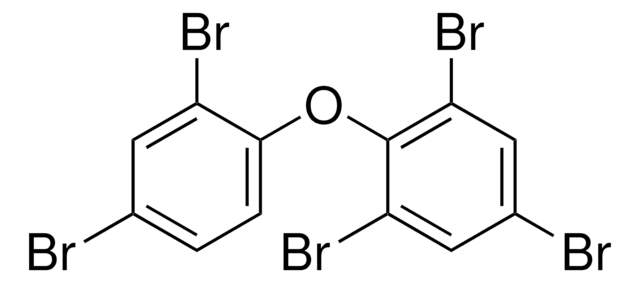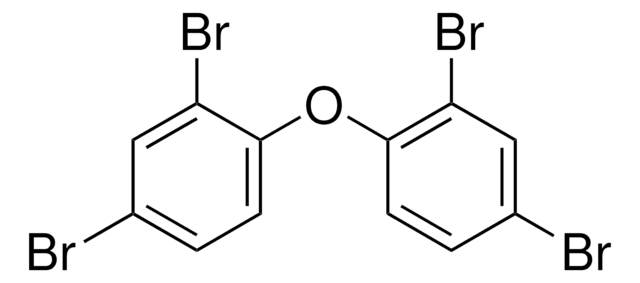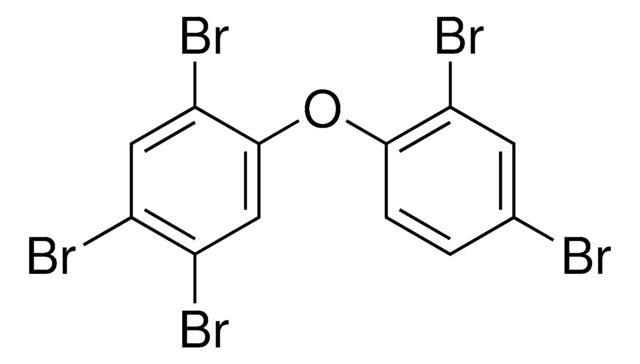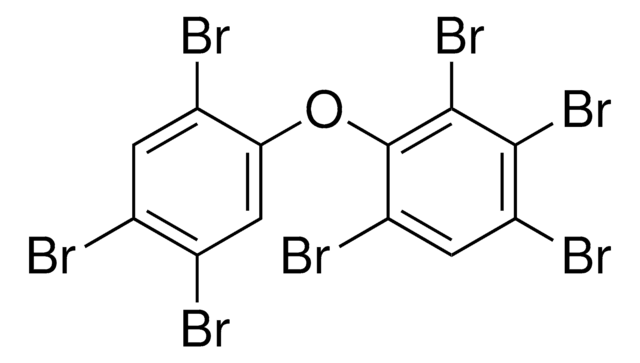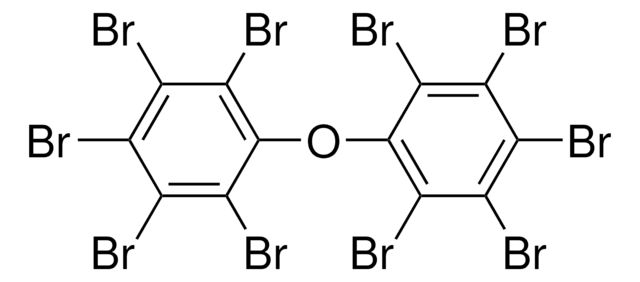33670
BDE No 47 solution
50 μg/mL in isooctane, analytical standard
Synonim(y):
2,2′,4,4′-Tetrabromodiphenyl ether solution, 2,2′,4,4′-TetraBDE, PBDE 47
About This Item
Polecane produkty
klasa czystości
analytical standard
okres trwałości
limited shelf life, expiry date on the label
stężenie
50 μg/mL in isooctane
metody
HPLC: suitable
gas chromatography (GC): suitable
Zastosowanie
environmental
format
single component solution
temp. przechowywania
2-8°C
ciąg SMILES
Brc1ccc(Oc2ccc(Br)cc2Br)c(Br)c1
InChI
1S/C12H6Br4O/c13-7-1-3-11(9(15)5-7)17-12-4-2-8(14)6-10(12)16/h1-6H
Klucz InChI
XYBSIYMGXVUVGY-UHFFFAOYSA-N
Zastosowanie
Inne uwagi
The standard should be transferred to a clean and appropriate vial or flask using clean pipettes or micro pipettes. The vial should be immediately capped to avoid any loss or evaporation of the solvent.
After opening the ampoule, the standard should not be stored or kept in the ampoule. To preserve the integrity of the product, the standard should be transferred to an appropriate vial that must be capped and stored according to the recommendation on the Certificate of Analysis.
Hasło ostrzegawcze
Danger
Zwroty wskazujące rodzaj zagrożenia
Zwroty wskazujące środki ostrożności
Klasyfikacja zagrożeń
Aquatic Acute 1 - Aquatic Chronic 1 - Asp. Tox. 1 - Flam. Liq. 2 - Skin Irrit. 2 - STOT SE 3
Organy docelowe
Central nervous system
Kod klasy składowania
3 - Flammable liquids
Klasa zagrożenia wodnego (WGK)
WGK 2
Temperatura zapłonu (°F)
10.4 °F
Temperatura zapłonu (°C)
-12 °C
Środki ochrony indywidualnej
Eyeshields, Faceshields, Gloves, type ABEK (EN14387) respirator filter
Choose from one of the most recent versions:
Masz już ten produkt?
Dokumenty związane z niedawno zakupionymi produktami zostały zamieszczone w Bibliotece dokumentów.
Klienci oglądali również te produkty
Nasz zespół naukowców ma doświadczenie we wszystkich obszarach badań, w tym w naukach przyrodniczych, materiałoznawstwie, syntezie chemicznej, chromatografii, analityce i wielu innych dziedzinach.
Skontaktuj się z zespołem ds. pomocy technicznej